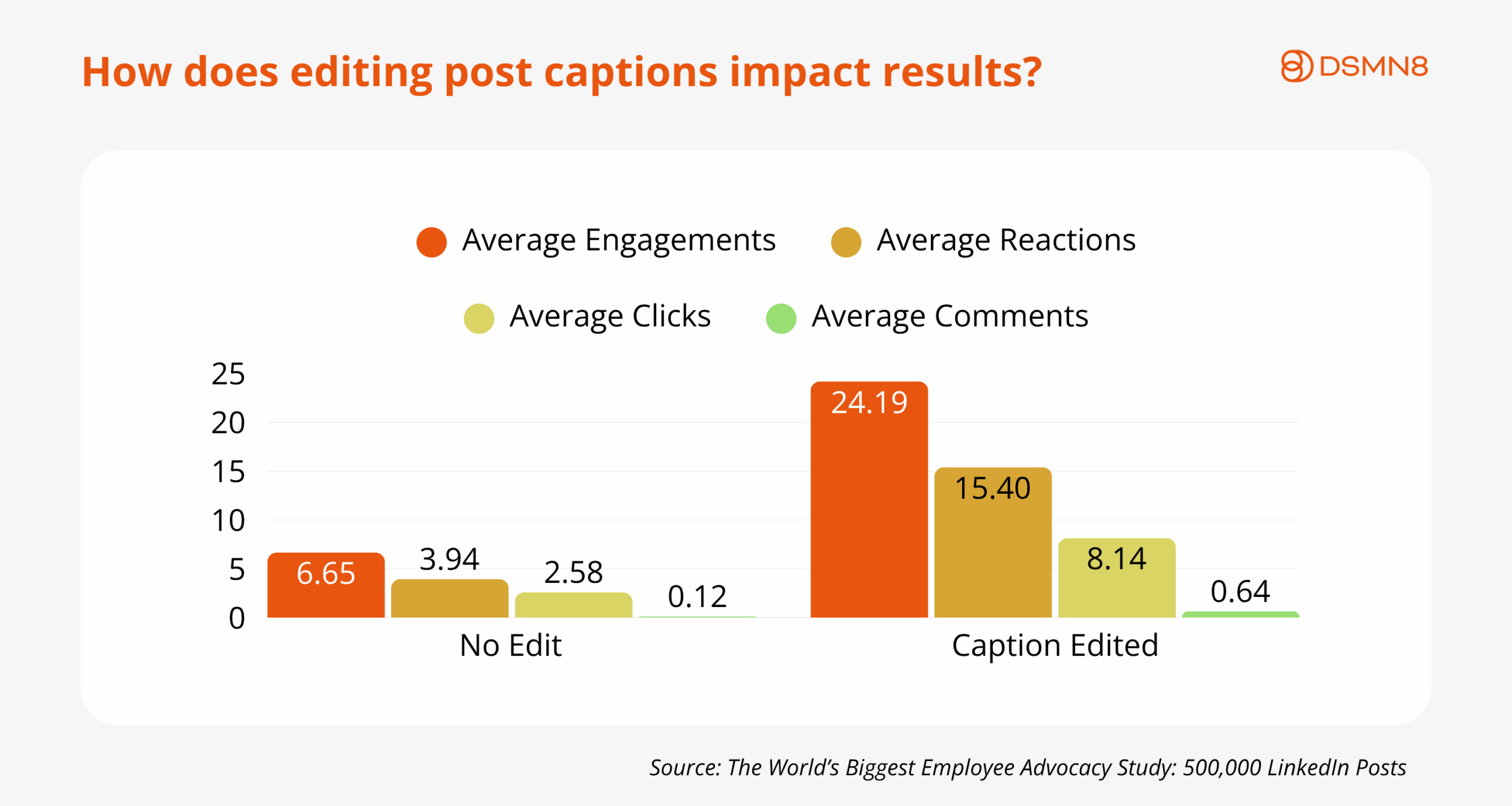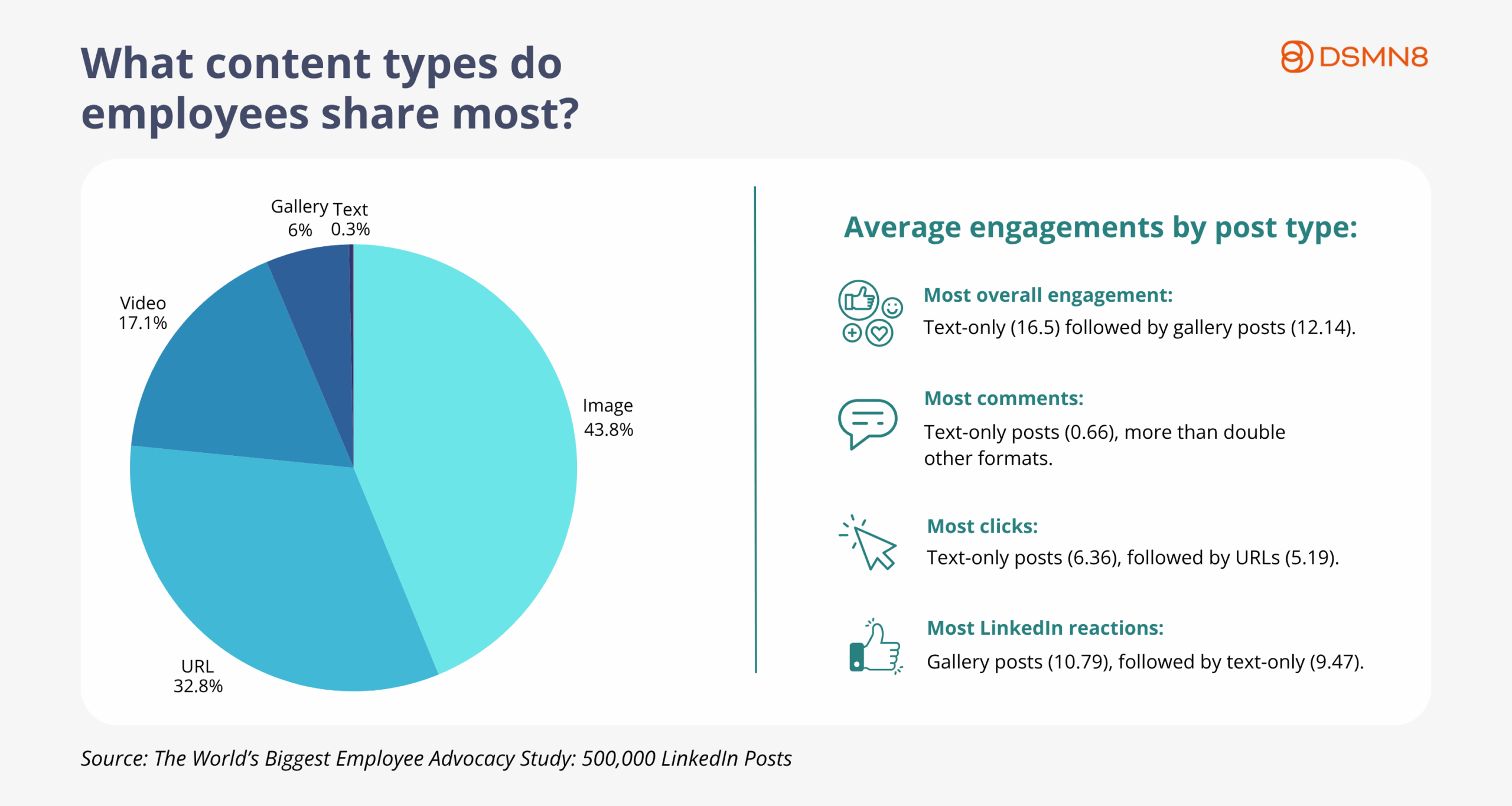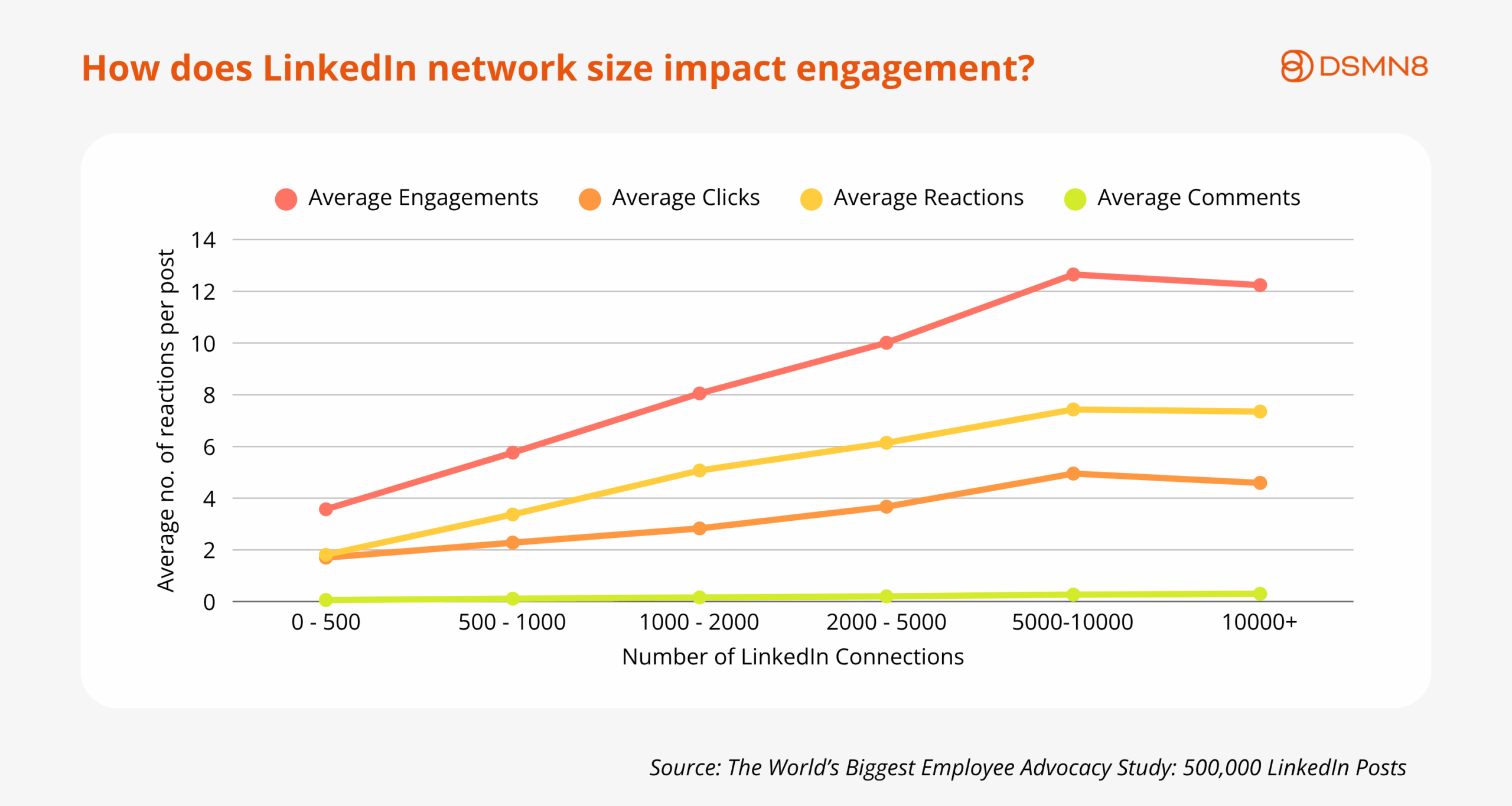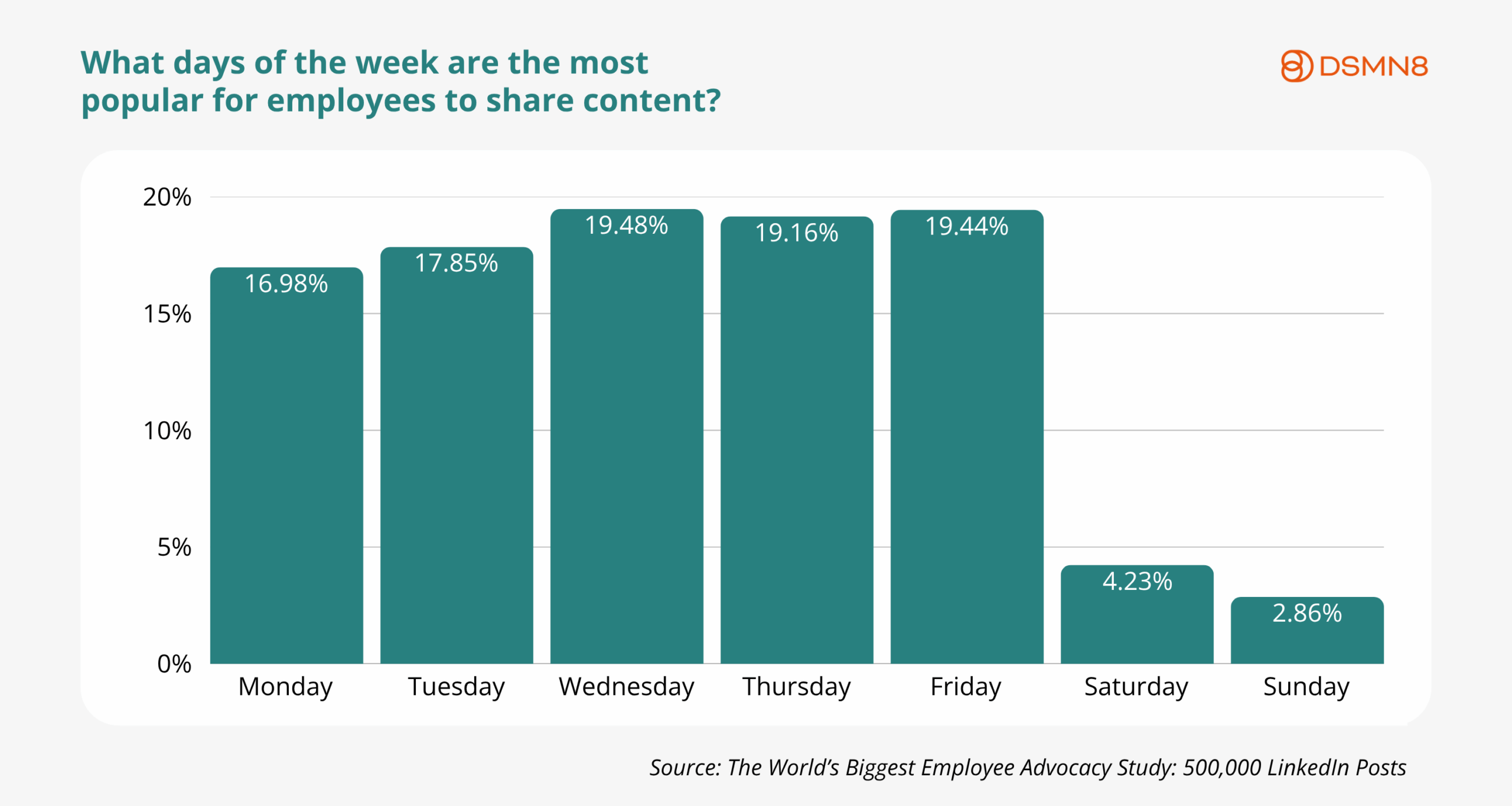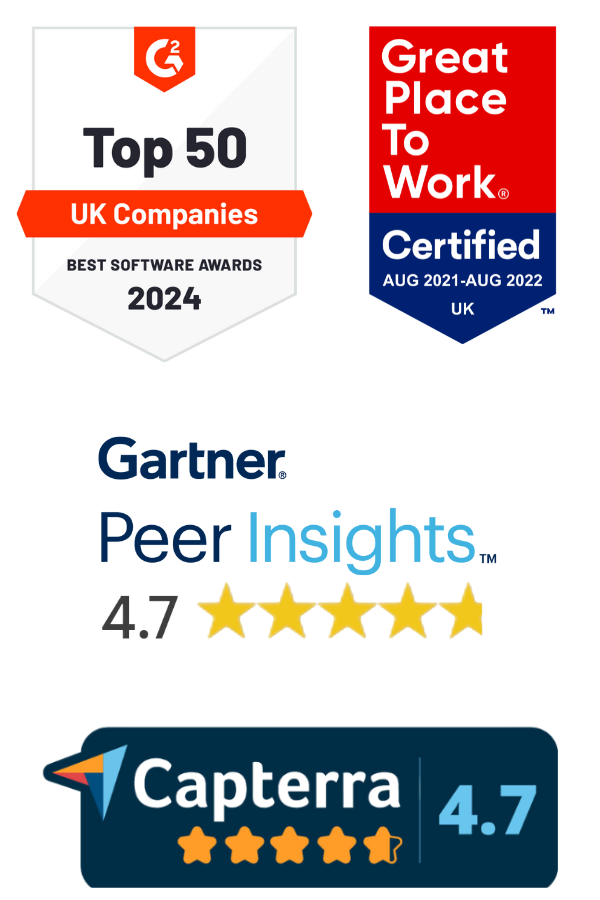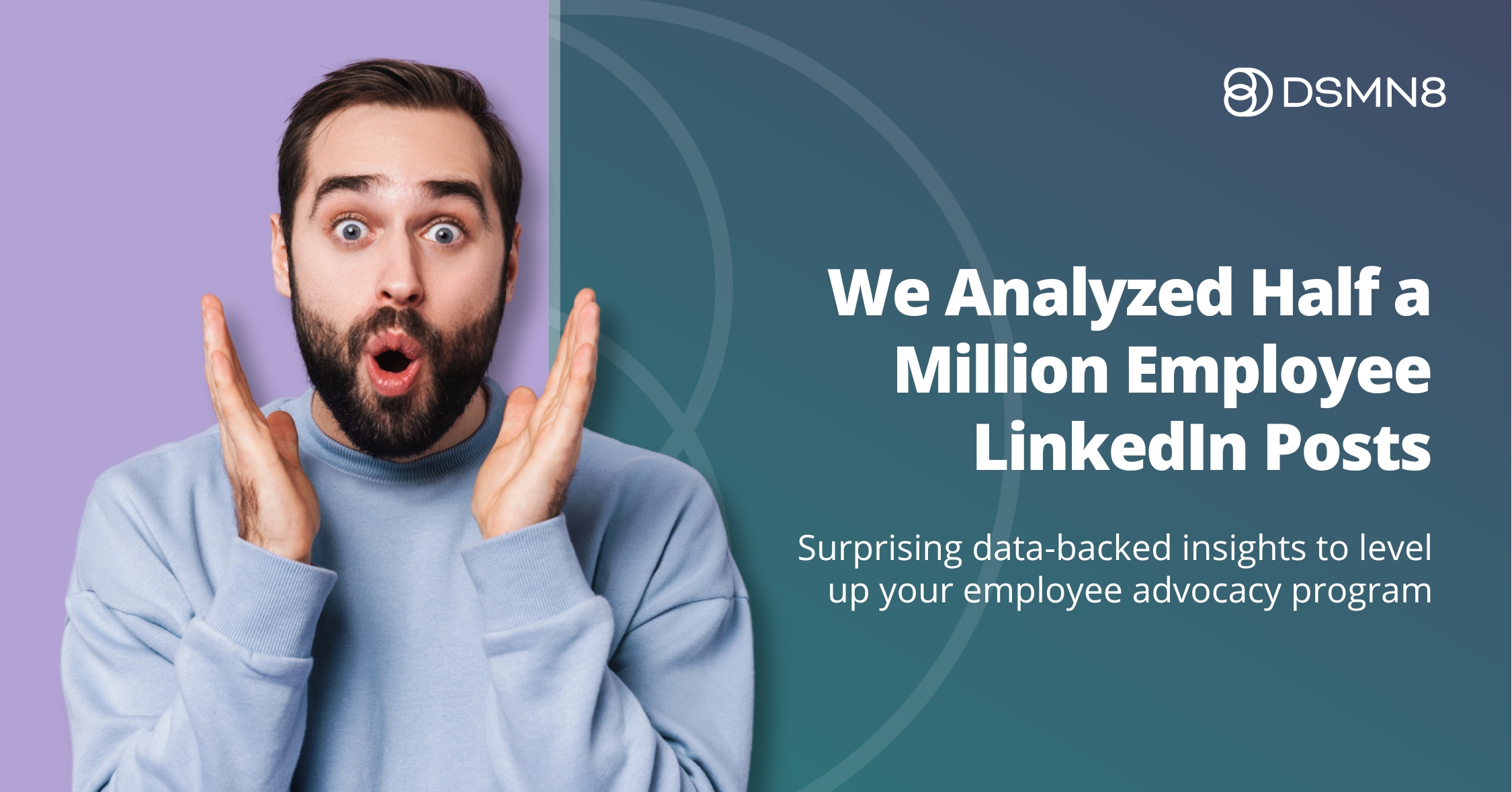
Think your employee advocacy strategy is complete? Think again.
Even the most experienced program managers often miss a few powerful tactics, the kind that are backed by hard data, not guesswork.
At DSMN8, we wanted to uncover what really works. So we analysed over 500,000 LinkedIn posts. Real stories, from real employees, across industries and continents.
The result? The world’s biggest employee advocacy study, packed with insights that might just change how you run your program.
Here are 5 data-backed moves your strategy could be missing…
1. Post Caption Editing is the Secret Sauce
When was the last time you reshared a company post without changing a word?
If you’re like most people, you probably wondered, “Does this even matter? Will anyone care?”
The days of copying and pasting corporate content are over.
Our research found that even the smallest edit to a suggested caption (as little as changing a word or two) can boost engagement by nearly 3x.
But here’s the thing: 96.4% of employee advocacy posts miss this key engagement driver.
Go a step further and encourage employees to add their own perspective: personal posts written from scratch outperformed standard shares by over 9x! 🤯
💡 Takeaway: Empower employees to share in their own voice. Even a quick edit can make all the difference.
2. Content Format Matters (And Top Performers May Surprise You)
While images and links are the most popular content types shared through advocacy programs, text-only and multi-image (gallery) posts see the highest engagement.
- Text-only posts: Most likely to spark conversations and generate clicks.
- Gallery posts: Great for showcasing events, culture, or stories, and perform well for reactions.
💡 Takeaway: Don’t be afraid to experiment with different formats! And don’t assume advocates don’t want to share links: the data says otherwise.
Want to make it easier for your employees to share the formats that perform best?
Book a demo and see how DSMN8 helps teams create, curate, and share content that drives results.
3. Rethinking Influence: The Power of the Middle
Everyone talks about “influencers” and the power of huge networks.
But our data told a different story.
Employees with 5,000–10,000 LinkedIn connections outperformed even the “power users” with tens of thousands.
And the largest group of advocates had 1,000–2,000 connections.
When more voices join in, the reach multiplies. Real influence is collective.
💡 Takeaway: Focus on activating more employees, not just a select few with the largest networks.
How active are your team on LinkedIn?
Get a free employee advocacy health check to find out and benchmark against your competitors.
4. When and Where Advocacy Works Best
If you picture employee advocacy, you might imagine LinkedIn… and you’d be right. 98% of all posts were shared there.
But here’s where it gets interesting:
- The most shared days: Fridays, Wednesdays, then Thursdays.
- The most engaging day? Tuesdays.
And late-night posts, those shared after hours, often connected with wider audiences.
💡 Takeaway: While employee advocates are more active towards the end of the working week, the digital workplace is always on.
5: Mobile: Small But Mighty
Only about 8% of advocacy posts come from mobile devices, but these posts actually outperform desktop shares in both engagement and clicks.
Maybe it’s because mobile posts happen “in the moment”: after a great meeting, a big win, or an inspiring event.
💡 Takeaway: Encourage mobile sharing and make sure your advocacy tools are mobile-friendly.
DSMN8 comes with an intuitive mobile app, so your team can post on the go, whether they’re desk-based or not.
Book a demo to find out more.
Final Thoughts & Full Report
The data is clear: authenticity wins, variety matters, and empowering more employees is the best way to scale results.
We’ve only scratched the surface here.
The full report is packed with data, benchmarks, and practical tips to help you build the most authentic, impactful advocacy program yet.
💬 Want to shape the next big chapter?
Take our 2026 Employee Advocacy Benchmark Survey and add your own story to the conversation.
Emily Neal
SEO and Content Specialist at DSMN8. Emily has 10 years experience blogging, and is a pro at Pinterest Marketing, reaching 1 million monthly views. She’s all about empowering employees to grow their personal brands and become influencers.

